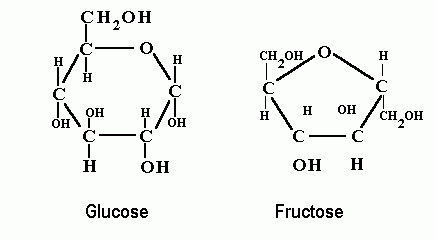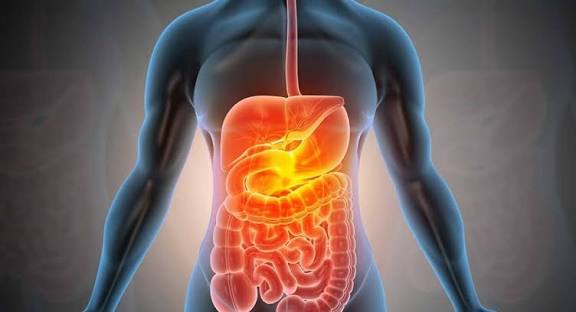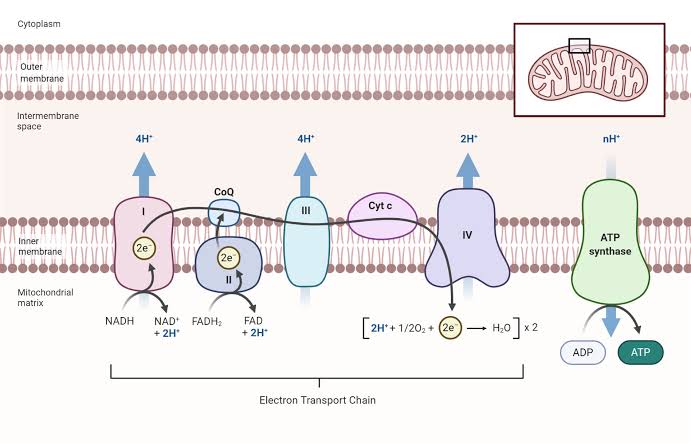
Biomedical Importance of Mono-, Oligo- and Polysaccharides
(a) Monosaccharides
Monosaccharides are the simplest form of carbohydrates and serve as fundamental building blocks for more complex carbohydrates. The most well-known monosaccharide is glucose, which is crucial for energy metabolism in humans and other organisms. Upon consumption, monosaccharides are rapidly absorbed into the bloodstream, providing an immediate source of energy. They play a vital role in cellular respiration, where glucose is oxidized to produce adenosine triphosphate (ATP), the primary energy currency of cells. Additionally, monosaccharides are involved in various metabolic pathways, including the synthesis of nucleotides and amino acids.
Furthermore, certain monosaccharides have specific biomedical roles; for example, galactose is essential for the synthesis of lactose in mammary glands and plays a role in brain development. Fructose, found naturally in fruits, can be metabolized by the liver and has implications in metabolic health when consumed in excess.
(b) Oligosaccharides
Oligosaccharides consist of 3 to 10 monosaccharide units linked together. They are significant for their prebiotic properties; certain oligosaccharides can stimulate the growth of beneficial gut bacteria, thereby promoting gut health and enhancing immune function. For instance, fructooligosaccharides (FOS) and galactooligosaccharides (GOS) are commonly found in foods such as onions and legumes and have been shown to improve gut microbiota composition.
In addition to their prebiotic effects, oligosaccharides can also influence nutrient absorption and metabolism. They may help modulate blood sugar levels by slowing down carbohydrate digestion and absorption rates. This property makes them relevant for managing conditions like diabetes.
(c) Polysaccharides
Polysaccharides are large carbohydrate molecules composed of long chains of monosaccharide units. They serve multiple critical functions within biological systems:
- Energy Storage: In plants, polysaccharides like starch serve as energy reserves that can be broken down into glucose when needed. In animals, glycogen acts similarly as a storage form of glucose primarily found in liver and muscle tissues.
- Structural Components: Polysaccharides such as cellulose provide structural support to plant cell walls, while chitin serves a similar purpose in fungal cell walls and exoskeletons of arthropods.
- Cell Signaling: Certain polysaccharides play roles in cell recognition processes through glycosylation—where sugars attach to proteins or lipids on cell surfaces—affecting cellular communication and immune responses.
- Viscosity and Texture: Many polysaccharides are used as thickeners or stabilizers in food products due to their ability to retain water or form gels (e.g., pectin).
- Therapeutic Applications: Some polysaccharides have been studied for their potential therapeutic benefits; for instance, beta-glucans derived from oats have been shown to lower cholesterol levels.
Overall, mono-, oligo-, and polysaccharides each play distinct yet interrelated roles that contribute significantly to human health through energy provision, structural integrity, metabolic regulation, gut health promotion, immune modulation, and potential therapeutic applications.
Isomerization of Carbohydrates
Carbohydrates, which include sugars and starches, can undergo isomerization, a process where molecules with the same molecular formula rearrange to form different structural or stereoisomers. This phenomenon is particularly significant in monosaccharides, which can exist in various forms due to their functional groups and stereochemistry.
Types of Isomerization
- Structural Isomerization: This involves the rearrangement of atoms within a molecule to form different structural isomers. For example, glucose (an aldose) can convert into fructose (a ketose) through an enediol intermediate during isomerization. The reaction typically occurs under basic conditions where the aldehyde group of glucose can be converted into a ketone group.
- Stereoisomerization: This type refers to the conversion between different stereoisomers, such as epimers and anomers. Epimers are sugars that differ in configuration at only one specific carbon atom. For instance, D-glucose and D-mannose are epimers at C-2. The interconversion between these two forms occurs through a mechanism involving deprotonation and protonation steps that lead to the formation of enolate ions.
- Epimerization: A specific case of stereoisomerization where one epimer transforms into another. In basic solutions, D-glucose can be converted into D-mannose through the Lobry de Bruyn–Alberda van Ekenstein reaction, which involves keto-enol tautomerization.
- Keto-Enol Tautomerization: This process plays a crucial role in carbohydrate isomerization. In this reaction, a carbonyl compound (like an aldehyde or ketone) converts into its corresponding enol form (which contains a double bond and an alcohol group). For example, when D-glucose is treated with a base, it can form an enolate ion that subsequently leads to either regeneration of glucose or transformation into fructose via protonation at different sites.
- Mutarotation: This phenomenon describes the change in optical rotation due to the interconversion between different anomers (α and β forms) of sugars in solution. For instance, when α-D-glucose is dissolved in water, it will gradually convert to β-D-glucose until equilibrium is reached.
Mechanism Overview
The general mechanism for carbohydrate isomerization involves several steps:
- Deprotonation of the hydroxyl group on the sugar leads to the formation of an enolate ion.
- Depending on where protonation occurs next—either at the carbon or oxygen—the resulting product may either regenerate the original sugar or yield a different sugar.
- The presence of bases facilitates these transformations by stabilizing intermediates like enolate ions and enediols.
In summary, carbohydrate isomerization encompasses various processes including structural changes and stereochemical alterations that allow for diverse sugar forms to exist and interconvert under certain conditions.
Importance of Isomerization
The ability of carbohydrates to undergo isomerization has significant implications for their function in biological systems:
- Energy Source: Different isomers may be utilized differently by organisms; for instance, glucose serves as a primary energy source.
- Storage Forms: Polysaccharides like starch and glycogen exhibit structural variations that affect how energy is stored and mobilized.
- Biochemical Pathways: The specific structure of carbohydrate isomers can determine their role in metabolic pathways; certain enzymes may only act on specific isomers.
Physical and Chemical Properties of Carbohydrates
Physical Properties of Carbohydrates
- Optical Isomerism: Carbohydrates, particularly monosaccharides, exhibit optical isomerism due to the presence of asymmetric carbon atoms. All monosaccharides except dihydroxyacetone have one or more asymmetric carbon atoms, allowing them to rotate plane-polarized light. Those that rotate light to the right are termed dextrorotatory (designated as (d) or (+)), while those that rotate it to the left are levorotatory (designated as (l) or (-)). These two forms are non-superimposable mirror images known as enantiomers.
- Mutarotation: This phenomenon refers to the change in optical rotation observed when an aqueous solution of sugar is allowed to stand. Monosaccharides with a free aldehyde or keto group can undergo mutarotation. For example, a freshly prepared solution of α-D-glucose has a specific rotation of +113°, which changes over time to +52.2°. Similarly, β-D-glucose starts at +19° and also shifts to +52.2° upon standing.
- Stereoisomerism: Carbohydrates can exist in multiple stereoisomeric forms due to variations in spatial configuration around their carbon atoms. For instance, glucose has two isomers concerning its penultimate carbon atom: D-glucose and L-glucose.
- Solubility and Taste: Many carbohydrates are soluble in water and possess a sweet taste, classifying them as sugars.
Chemical Properties of Carbohydrates
- Reducing Property: Carbohydrates can be classified as reducing or non-reducing based on the presence of free aldehyde or keto groups. Reducing sugars can reduce metal ions such as copper or silver under alkaline conditions, which is the basis for tests like Fehling’s and Benedict’s tests where cupric ions are reduced to red cuprous oxide.
- Reaction with Acids: In reactions with concentrated sulfuric acid (H₂SO₄), carbohydrates undergo dehydration leading to the formation of furfural and its derivatives, which is tested using Molisch’s test—a general test for carbohydrates.
- Oxidation Reactions:
- Aldonic Acids: Aldoses can be oxidized by agents like bromine water at neutral pH, converting their aldehyde group into a carboxyl group.
- Uronic Acids: When aldoses are oxidized enzymatically, only the primary alcohol group is converted into a carboxyl group, leaving the aldehyde unchanged.
- Aldaric Acids: Oxidation with nitric acid results in both aldehyde and primary alcohol groups being oxidized into carboxyl groups; for example, glucose yields glucaric acid upon oxidation.
- Reaction with Alkali: Glucose reacts with dilute alkali over time through the Lobry de Bruyn–van Ekenstein transformation, resulting in an equilibrium mixture of glucose, fructose, and mannose due to enediol formation.
In summary, carbohydrates exhibit diverse physical properties such as optical activity and solubility while demonstrating significant chemical reactivity through reduction reactions, oxidation processes, and transformations involving acids and bases.
Differentiating Proteoglycans and Glycoproteins
1. Structural Differences
- Glycoproteins: These molecules consist of a protein backbone with short, branched oligosaccharide chains attached. The carbohydrate content in glycoproteins is relatively lower compared to proteoglycans. The oligosaccharides can vary in composition and structure, contributing to the diverse functions of glycoproteins.
- Proteoglycans: In contrast, proteoglycans are characterized by a core protein that is covalently linked to one or more long, linear glycosaminoglycan (GAG) chains. These GAG chains are composed of repeating disaccharide units, which significantly contribute to the overall mass and structural properties of proteoglycans. The presence of these long carbohydrate chains makes proteoglycans bulkier than glycoproteins.
2. Functional Differences
- Glycoproteins: They play crucial roles in various cellular functions such as cell-cell communication, recognition, signaling, and immune responses. Glycoproteins are often found on cell membranes or secreted into the extracellular environment where they serve as enzymes, hormones, antibodies, and receptors. Their carbohydrate components are essential for mediating interactions between cells and their environments.
- Proteoglycans: These molecules primarily serve structural functions within tissues. They are predominantly found in connective tissues and play a vital role in providing strength, cushioning, and support to the extracellular matrix (ECM). Proteoglycans help maintain tissue hydration and elasticity by binding water molecules and other solutes. They also participate in cell signaling pathways by interacting with growth factors and cytokines.
3. Summary of Key Differences
In summary:
- Glycoproteins have shorter carbohydrate chains and are involved mainly in communication and signaling processes.
- Proteoglycans contain longer GAG chains that provide structural support within tissues.
Both types of molecules are essential for proper biological function but differ significantly in their structure and roles within the body.







